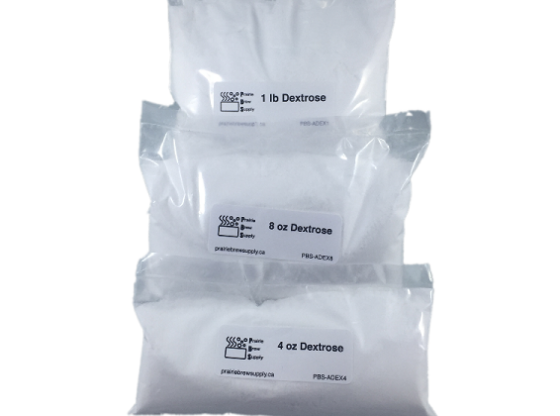Naturally carbonating your beer can be done pretty easy. Most beer kits come with a package of cane sugar which is called Priming Sugar. Priming Sugar feeds the yeast just like in the primary fermentation stage. Unlike the primary fermentation stage that releases the CO2, the bottling will capture the CO2 in the capped bottle.
You do have to make sure that you don’t over carbonate your beer or use bottles that can’t handle the amount of carbonation you’re adding to your beer. This can easily cause your bottles explode from the pressure.
Different styles of beers require different carbonation levels. A higher carbonation helps to carry the hops aroma to the nose for an IPA while a lower carbonation provides a more velvet texture in your mouth for a stout. Even different types of sugars provide a different carbonation. Corn sugar is your most common, but you could use table sugar, malt extract, brown sugar, Molasses & Sorghum. Using honey should be avoided because you can not control the sugar gravity.
Most beer kits use cane sugar, which consists of 4 oz of cane sugar for 26 Liter beer. Cane sugar doesn’t add any additional flavour. This should produce the correct 2.5 volumes of CO2 for the normal American IPA.
The table below is an estimate of the amount of CO2 created and sitting in your beer at the listed fermentation temperature before you add your priming sugar.Temp. (°F) Vol. CO2 Temp. (°F) Vol. CO2 32° 1.7 55° 1.1 35° 1.6 60° 1.0 40° 1.45 65° 0.92 45° 1.3 70° 0.85 50° 1.2 75° 0.78
So for adding your priming sugar, the brewers rule of thumb for the basic priming sugar amount for every 26 Liters of beer:
- 3/4 cups (4 ounces, or 113 grams) of corn sugar (dextrose)
- ⅔ cup (5.3 ounces, or 150 grams) of table sugar
- 1 ¼ cups (181 grams) of light dry malt extract (DME)
In short it takes ½ ounce of dextrose (corn sugar) per 4 Liters to raise that gallon of beer by one volume of carbonation. To get 26 Liters of CO2 for your So, to raise a 26 Liters batch by 1.1 volumes, we would need the following:
1.1 vol/(4Liters)* (26 Liters) = 5.5 volumes * ½ ounce sucrose = 2.75 ounces of Dexdros.
Procedure
To get started, syphon your beer from your carboy to your sanitized primary pail by placing the carboy on the counter and the pail on the floor. Follow the syphoning instructions in the above instructions.
Boil a cup of water and dissolve the 4 oz of priming sugar for 10 minutes. Then dump it in your beer and gently mix. You do not want to add to much oxygen or loose the CO2 that is captured in your beer at this stage.
That’s it. Now we bottle. See my post on Bottling for more information.
Aging
You need to store your bottles for at least 2-4 weeks to allow the carbonation to build up. There will be a little bit of sediment on the bottom of the bottle when it’s done. The best way to drink beer that is naturally carbonated is to pour it into a glass and leave a little bit of beer in the bottle. The sediment won’t hurt you. It will only cause a bit of cloudiness in your glass once it mixes in with your beer. Do not store your beer in the fridge until you are ready to drink your beer. It should have a shelf life of a several months. I found that beer that is naturally carbonated has a silkier texture than beer that has been injected with CO2. It is a very pleasant beer.

